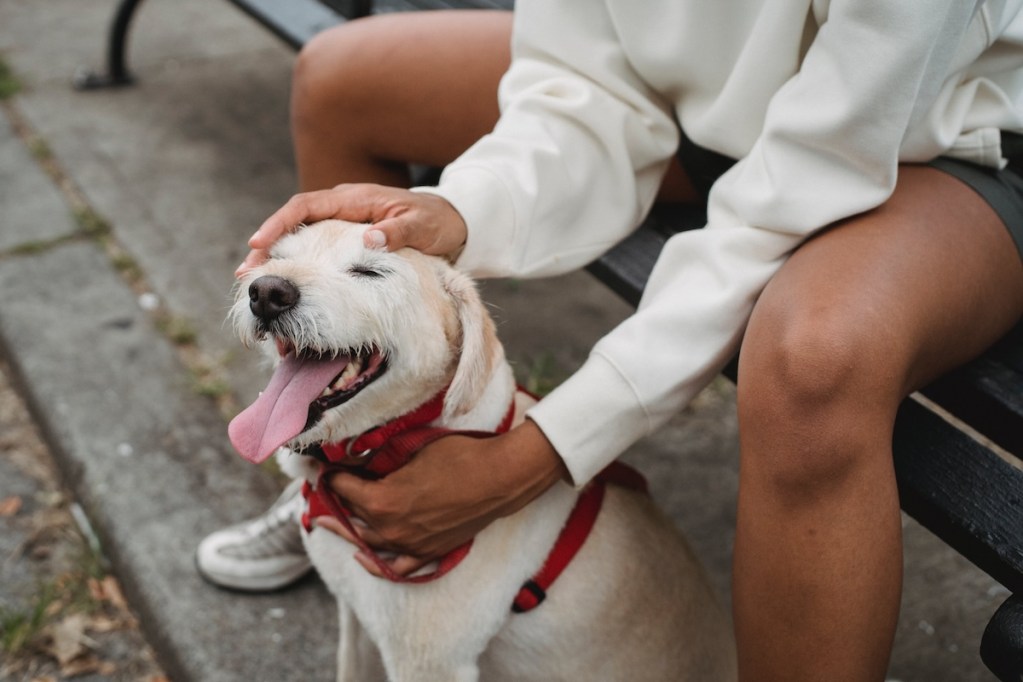
Just like us, dogs can suffer from allergies. While we can use a nasal spray or take an allergy medication, our dogs rely on us to treat their symptoms. Diphenhydramine, the generic name for the widely used name brand Benadryl, is commonly prescribed by veterinarians to treat seasonal allergies, anxiety, and even motion sickness. Have you ever wondered, “How much Benadryl can I give my dog?” We’ll walk you through everything you need to know about giving dogs Benadryl, from the correct dosage to potential side effects.
Benadryl dosage for dogs

Always speak to your vet before giving your dog any medication or supplements. Because your vet knows your pup’s medical history, they can make the proper recommendations. Benadryl should not be used if your dog:
- Is pregnant or nursing
- Has glaucoma
- Suffers from cardiovascular disease
- Has been diagnosed with low blood pressure
- Is taking certain medications
- Has hypothyroidism
- Has been diagnosed with seizure disorders
Benadryl should also not be used as the sole form of treatment for anxiety. While it’s great to have on hand in a pinch for high-stress situations, we recommend working with your vet — or a professional trainer — to get to the bottom of your dog’s anxiety. If your vet gives you the all-clear, you can give your dog Benadryl for allergies or anxiety or use it as a mild sedative while traveling.
You should administer 2-4 milligrams per kilogram or 0.9–1.8 milligrams per pound of body weight two to three times a day. In other words, if your dog weighs 50 pounds, you’ll need to give him 50 milligrams of Benadryl up to three times a day to manage his symptoms.
How fast does Benadryl work on dogs?

Benadryl acts in dogs similarly to how it works in humans, which means it kicks in pretty quickly. You should expect the effects to show within 30 minutes to an hour. If you’re using it for something you can see, like hives, you will notice a response, otherwise assume your pup pup has started to feel better and watch for a decrease in sneezing, scratching, and sniffling.
Some animals will need a few doses per day, and you might discover that a longer-lasting antihistamine works better for your bud. Discuss with your vet to determine which medication will serve him best. Also, remember that Benadryl can make dogs feel sleepy. Expect those side effects to begin within the hour as well.
Is Benadryl safe for dogs in a 25-milligram dose?

Based on these calculations, one 25-milligram tablet of Benadryl two to three times daily is the correct dose for a 25-pound dog. So, if your pup weighs 25 pounds or over, then a dose of 25 milligrams several times a day is perfectly safe. Small dogs should be given children’s liquid Benadryl, as it contains a lower concentration of diphenhydramine and makes it easier for you to administer the correct dosage to your pup (make sure it doesn’t have any chemicals that are bad for dogs, like xylitol, first).
How much Benadryl should I give my 70-pound dog?

As a general rule, you should administer 1 milligram per pound of body weight. A 70-pound dog will take 70 milligrams of Benadryl. Most Benadryl tablets come in 25-milligram and 50-milligram tablets, so you’ll need to section one of the tablets — or use children’s liquid Benadryl — to give your pup the correct dose.
Why is Benadryl good for dogs?

Benadryl is an antihistamine, which improves allergies, motion sickness, and inflammation. Benadryl treats allergy symptoms by blocking H1 receptors, which receive signals from allergy-causing histamines. Many veterinarians recommend the use of Benadryl for anxiety caused by stressful situations, car sickness, seasonal allergies, food allergies, and allergic reactions to heartworm treatments.
While it’s useful for treating motion sickness and anxiety, Benadryl is most commonly recommended for allergic reactions. According to VCA Hospitals, “Most allergens are proteins from plants, insects, animals, or foods.” Allergies are relatively common in dogs and usually appear when your pup is around 6 months old. Ask your vet if Benadryl can help your dog if he suffers from symptoms like these:
- Coughing and sneezing
- Discharge from the eyes
- Dry, itchy skin
- Runny eyes and/or nose
- Hives and welts
- Wheezing
You’ll also want to keep an eye out for digestive issues, as some food allergies manifest through nausea, diarrhea, and vomiting.
Potential side effects and complications

While Benadryl is generally well tolerated, some dogs have adverse reactions to antihistamines like diphenhydramine. Dry mouth, extreme fatigue, diarrhea, vomiting, hypersalivation, increased heart rate, rapid breathing, and problems urinating have all been documented in some dogs. In ultrarare cases, Benadryl can have a paradoxical effect and may cause hyperactivity instead of drowsiness. Because of the possible side effects, we recommend starting off with a low dose until you know how well your pup tolerates Benadryl. Take your dog to the vet immediately if he appears to be in distress. Although Benadryl poisoning is rare, it requires prompt medical attention to ensure the best possible outcome.
Benadryl is a relatively safe drug you can administer at home to help treat your dog’s anxiety and allergy symptoms. You should always consult your veterinarian before administering any drug. Please remember to store all medications out of your dog’s reach, and if you give him Benadryl for anxiety, work with your vet to find ways of managing the issue so your pup doesn’t become dependent on medication.



